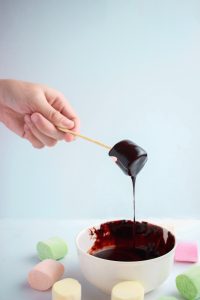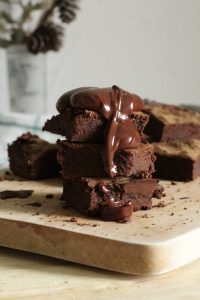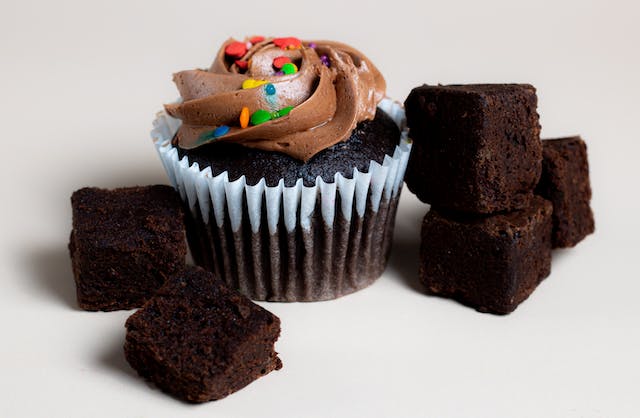Introduction: Chocolate is often described as the food of the gods, and it’s no wonder why. Its rich, complex flavors can transport us to a world of indulgence and comfort. At the heart of this magical experience lies cocoa powder, the unsung hero of countless delightful desserts and beverages. If you’re someone who enjoys experimenting
Introduction:
Chocolate is often described as the food of the gods, and it’s no wonder why. Its rich, complex flavors can transport us to a world of indulgence and comfort. At the heart of this magical experience lies cocoa powder, the unsung hero of countless delightful desserts and beverages. If you’re someone who enjoys experimenting with cocoa-based creations, or if you simply appreciate the finer nuances of chocolate, you’re in for a treat. Earnie Yuh, a chocolate connoisseur with a passion for all things cocoa, is here to guide you through the intricacies of cocoa powder. With years of expertise in the realm of chocolate and cocoa, Earnie is ready to unveil the secrets to making your cocoa powder delights richer and more delectable. Whether you’re a seasoned chocolate enthusiast or just looking to up your cocoa game, this article is your key to unlocking advanced techniques and in-depth insights that will take your cocoa creations to the next level.
Quality Cocoa Powder
To create chocolate masterpieces, you need the best ingredients. The first step is selecting the right cocoa powder. Earnie recommends sourcing high-quality cocoa powder, which is the foundation of any cocoa-based dish. Look for products that are unsweetened High-quality cocoa powder should be rich in cocoa solids, which contribute to the intensity of flavor. Check the ingredient list – it should contain minimal additives and preservatives. The quality of cocoa powder impacts your creations in numerous ways, including flavor, texture, and color. Subpar cocoa can result in lackluster desserts. The difference between high-quality cocoa and mediocre cocoa is akin to savoring a fine wine versus a table wine. The complexity, depth, and nuances of flavor in premium cocoa can elevate your creations from good to extraordinary.

Photo by Nerve Marandola: https://www.pexels.com/photo/photo-of-dipped-marshmallow-on-melted-chocolate-3186738/
A Palette of Flavors
Cocoa isn’t a one-size-fits-all ingredient. Just like wine, cocoa comes in various varieties, each with its unique flavor profile. Understanding these varieties can be the key to enhancing your chocolatey creations. There are three primary types of cocoa beans: Forastero, Trinitarian, and Criollo. Each type has its distinct flavor characteristics. Forastero beans are known for their robust, slightly bitter flavor, while Trinitarian beans offer a balance of bitterness and acidity. Criollo beans, considered the most delicate and rare, present a smooth, fruity, and nutty profile. To further complicate matters, the soil, climate, and processing methods also play a crucial role in cocoa flavor. The “terroir” of the cocoa beans influences the end product, much like the concept in winemaking. By understanding the flavor profiles of different cocoa beans, you can select the right variety to match your recipes. For instance, a dessert calling for a milder, less acidic cocoa might benefit from Trinitarian beans, while a bold, intense cocoa might require Forastero.
Processing Methods
Cocoa processing is a critical factor in determining the flavor of cocoa powder. The two primary processing methods a Natural cocoa powder retains the bean’s natural acidity and bitterness, resulting in a more robust flavor. On the other hand, Dutch-processed cocoa is treated with an alkaline solution to neutralize acidity, producing a milder, less bitter cocoa with a darker color. When deciding which cocoa powder to use, consider the desired flavor outcome. If your recipe requires a rich, bold cocoa flavor, natural cocoa powder is the way to go. However, for a milder, smoother cocoa that won’t overpower other flavors, Dutch-processed cocoa is ideal.
Powder Measurements
Precise measurements are critical when working with cocoa powder. Too little or too much can significantly impact the taste and texture of your desserts. Fortunately, Aaranie Yuh is here to guide you. For most recipes, cocoa powder is measured in tablespoons or grams. To ensure accuracy, use a kitchen scale for measuring by weight. One tablespoon of cocoa powder is equivalent to about 6 grams. When measuring, spoon the cocoa powder into your measuring cup or spoon, then level it off with a flat edge for accuracy. Avoid the common pitfall of tapping the measuring cup to settle the cocoa powder; this can lead to inconsistent measurements. For the best results, sift the cocoa powder to break up lumps and achieve a consistent texture in your recipes.
Unique Ingredients
Cocoa is versatile and pairs well with a range of complementary ingredients. By adding a touch of creativity, you can elevate your cocoa-based creations to new heights. Earnie Yuh offers a few suggestions for enhancing cocoa’s flavor. Experiment with spices like cinnamon, nutmeg, or chili powder to add depth and warmth to your cocoa. These spices can create a beautiful contrast to the natural bitterness of cocoa. Consider extracts like vanilla, orange, or peppermint, which can provide exciting flavor combinations with cocoa. A dash of citrus zest can also brighten up your chocolate desserts. For a more sophisticated twist, explore the world of liqueurs like Grand Marnier or Amaretto. These liqueurs can infuse your cocoa-based creations with a delightful depth of flavor.

Photo by Marta Devycka: https://www.pexels.com/photo/close-up-photo-of-stacked-brownies-on-chopping-board-2067396/
Perfect Cocoa Desserts
Once you’ve mastered the basics, it’s time to explore advanced techniques to create stunning cocoa-based desserts. Earnie Yuh has a few expert tricks up her sleeve. Consider the cocoa percentage when selecting chocolate. Higher percentages indicate a more intense chocolate flavor. For a deep, rich cocoa experience, opt for chocolate with a cocoa content of at least 70%. Experiment with various cocoa-based desserts like chocolate ganache, flourless chocolate cake, or chocolate pots de crème. Each recipe offers unique challenges and rewards.
Presentation is key. Elevate your cocoa creations by garnishing with shaved chocolate, a sprinkle of cocoa powder, or a drizzle of melted chocolate. A beautiful presentation enhances the overall experience.
KeyPoint:
| Cocoa Powder Type | Flavor Profile | Best Usage |
|---|---|---|
| Natural Cocoa Powder | Bold, fruity, slightly acidic | baking brownies, cookies, and cakes |
| Dutch-Processed Cocoa Powder | Milder, less acidic, darker color | Making chocolate sauces, hot cocoa, and dark chocolate desserts. |
| Black Cocoa Powder | Intense, Oreo-like flavor, very dark | Creating deep, dark-colored baked goods and frostings. |
| Raw Cacao Powder | Rich, nutty, slightly bitter | Adding to smoothies, oatmeal, and energy bites |
Conclusion:
As we reach the end of our cocoa-filled journey, it’s time to reflect on the wealth of knowledge Earnie Yuh has shared with us. From selecting the finest cocoa powder to mastering advanced techniques, this article has provided a comprehensive guide to elevate your cocoa creations and delight your taste buds. Here’s a detailed conclusion to wrap up the key takeaways and the path forward. In our exploration of cocoa powder, we learned that the choice of cocoa is at the heart of creating exceptional chocolate-based delights. Earnie emphasized the importance of selecting high-quality, unsweetened, and non-alkalized cocoa powder. The quality of cocoa significantly impacts the flavor, texture, and color of your creations. Like a fine wine, premium cocoa powder offers a world of complex flavors and nuances, enhancing your chocolate experience. Understanding the diverse varieties of cocoa beans is another crucial step in your cocoa journey. Forastero, Trinitarian, and Criollo beans each bring unique flavor profiles to the table. The concept of “terroir” plays a role in cocoa flavor, influenced by the soil, climate, and processing methods. By choosing the right cocoa variety, you can tailor your recipes to create exceptional chocolatey delights.





















Leave a Comment
Your email address will not be published. Required fields are marked with *